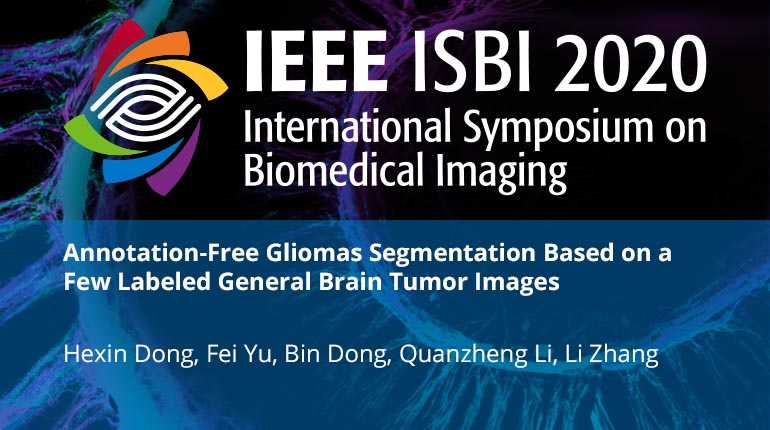Collection:

Pixel-level labeling for medical image segmentation is time-consuming and sometimes infeasible. Therefore, using a small amount of labeled data in one domain to help train a reasonable segmentation model for unlabeled data in another domain becomes an important need in medical image segmentation. In this work, we propose a new segmentation framework based on unsupervised domain adaptation and semi-supervised learning, which uses a small amount of labeled general brain tumor images and learns an effective model to segment independent brain gliomas images. Our method contains two major parts. First, we use unsupervised domain adaptation to generate synthetic general brain tumor images from the brain gliomas images. Then, we apply semi-supervised learning method to train a segmentation model with a small number of labeled general brain tumor images and the unlabeled synthetic images. The experimental results show that our proposed method can use approximate 10% of labeled data to achieve a comparable accuracy of the model trained with all labeled data.
- IEEE MemberUS $11.00
- Society MemberUS $0.00
- IEEE Student MemberUS $11.00
- Non-IEEE MemberUS $15.00
Videos in this product
Annotation-Free Gliomas Segmentation Based on a Few Labeled General Brain Tumor Images
Pixel-level labeling for medical image segmentation is time-consuming and sometimes infeasible. Therefore, using a small amount of labeled data in one domain to help train a reasonable segmentation model for unlabeled data in another domain becomes an important need in medical image segmentation. In this work, we propose a new segmentation framework based on unsupervised domain adaptation and semi-supervised learning, which uses a small amount of labeled general brain tumor images and learns an effective model to segment independent brain gliomas images. Our method contains two major parts. First, we use unsupervised domain adaptation to generate synthetic general brain tumor images from the brain gliomas images. Then, we apply semi-supervised learning method to train a segmentation model with a small number of labeled general brain tumor images and the unlabeled synthetic images. The experimental results show that our proposed method can use approximate 10% of labeled data to achieve a comparable accuracy of the model trained with all labeled data.
 Cart
Cart Create Account
Create Account Sign In
Sign In
